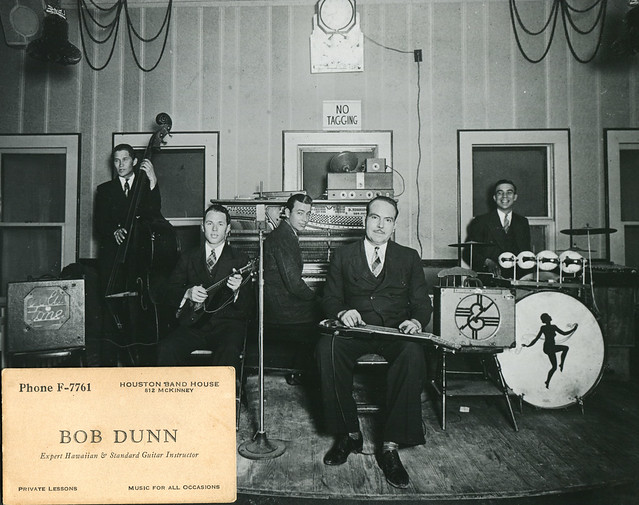 |
| This is what a Texas Swing band looks like. |
One of the aspects that I really loved about the "Texas Swing" approach was that it was founded by dance band trained folk musicians, "breakdown" fiddlers and such, who were exposed to African-America music styles who then clumsily, but honestly, reconfigured the music to suit themselves and their audience. Milton Brown, Cliff Bruner and Pre-War Bob Wills recordings always sparkled with this new concoction of melding the established traditions of Anglo-American dance music and the aspirational sounds of the Black "hot music" bands that they would run into. It's not for no reason Milton Browns' sides were cut in here in New Orleans. Steel man Bob Dunn was a hot jazz Trombonist before he pioneered the brand new instrument that came to dominate Texas Swing to this day. It's was "swinging," but it wasn't "Jazz." It was something all its own.
| Nice hat, but he's not from Texas. Actually a Jew from Rhode Island. |
It wasn't until WW2 and just after did the "hillbilly" guys start playing with the instrumental and arranging sophistication of not only the great Black dance bands (Ellington, Basie) but also the White City-boy bands like Woody Herman and Stan Kenton. Here and then the "Texas" sound start to fade replaced with the now California based "Western Swing," essentially "jazz" played with cowboys boots. It's not my favorite development, but listening to the best examples of it show just how far the Texas boys had strayed from "Boil Them Cabbage Down." (Tex Williams' amazing note for note rendering of Stan Kenton's "Artistry in Swing" as "Artistry in Western Swing" is as fine as an example as you will find.) This is where guys like Ray Benson and his Asleep at the Wheel start listening and take from there. Seriously. He told me so in person, "that old hokum stuff from before, it's just not cool." Which explains his personal version of the music which for good or ill has become the de facto standard of the form in it's present and entirely de-contextualized version.
Enjoy:
Submitted humbly is my personal version of Texas Swing music: